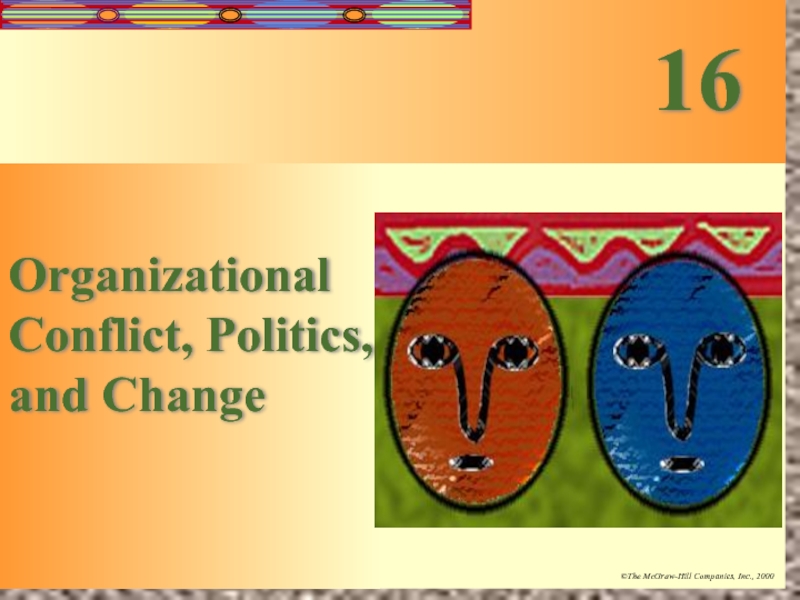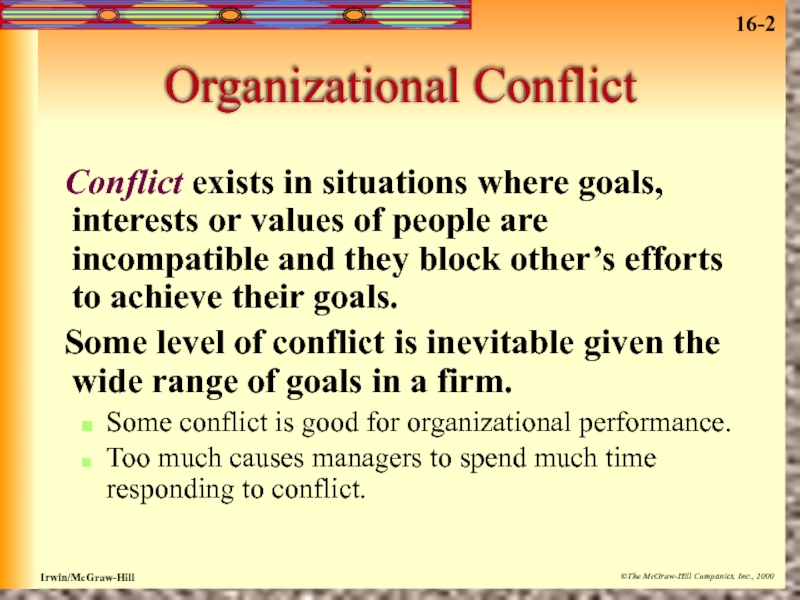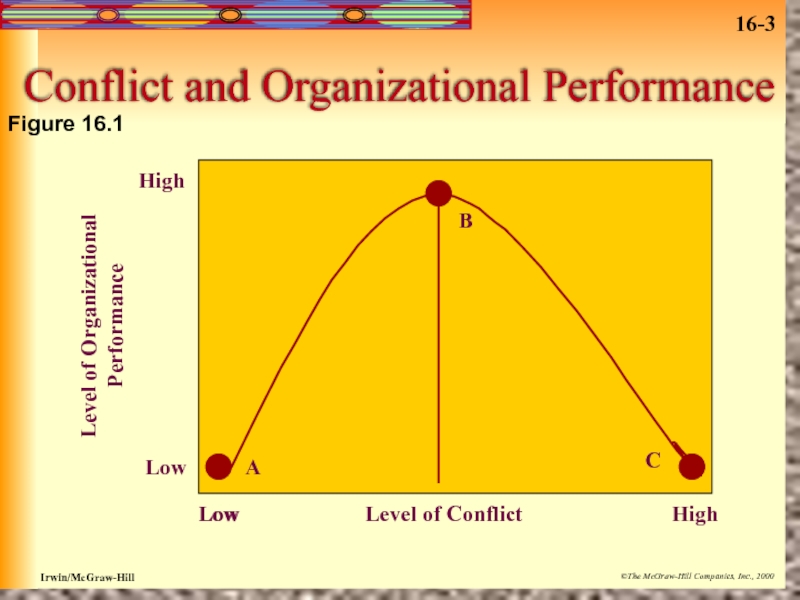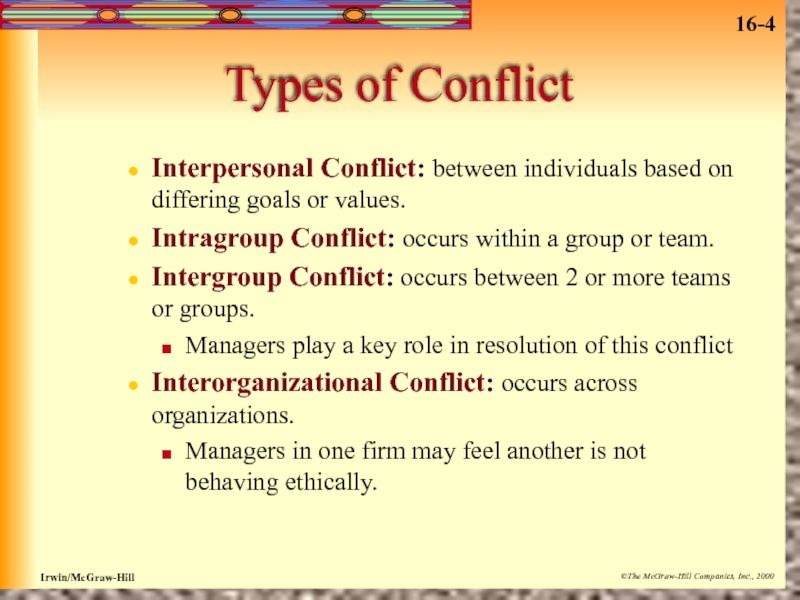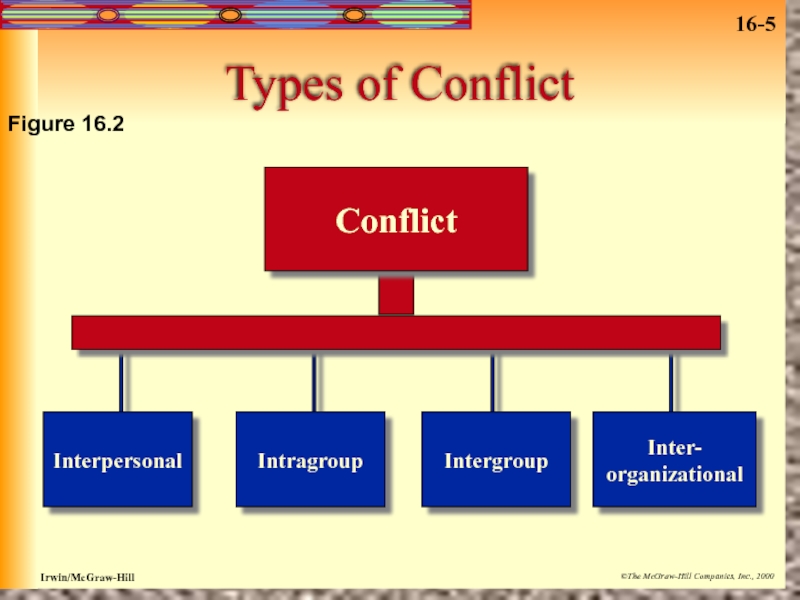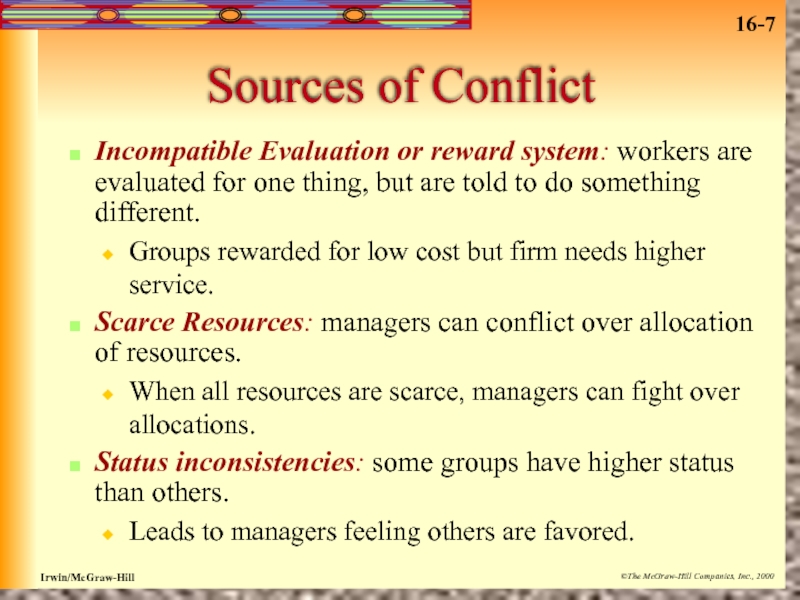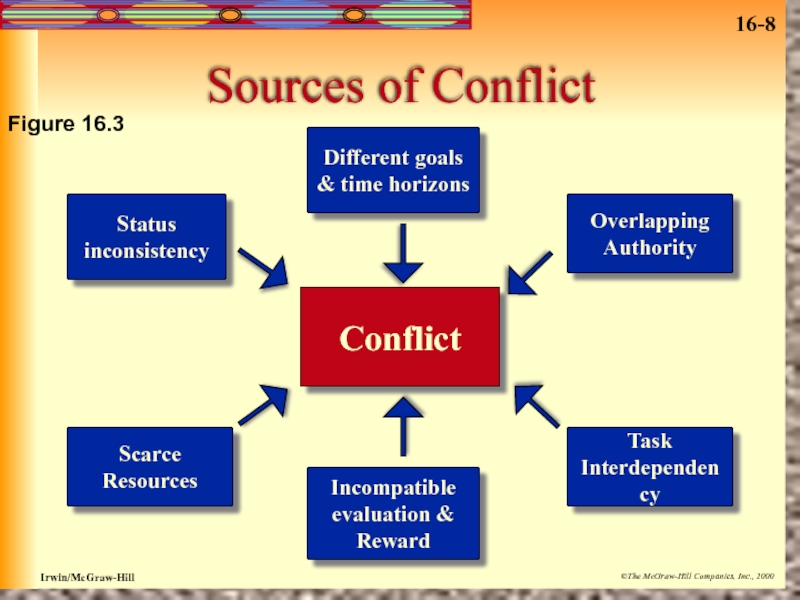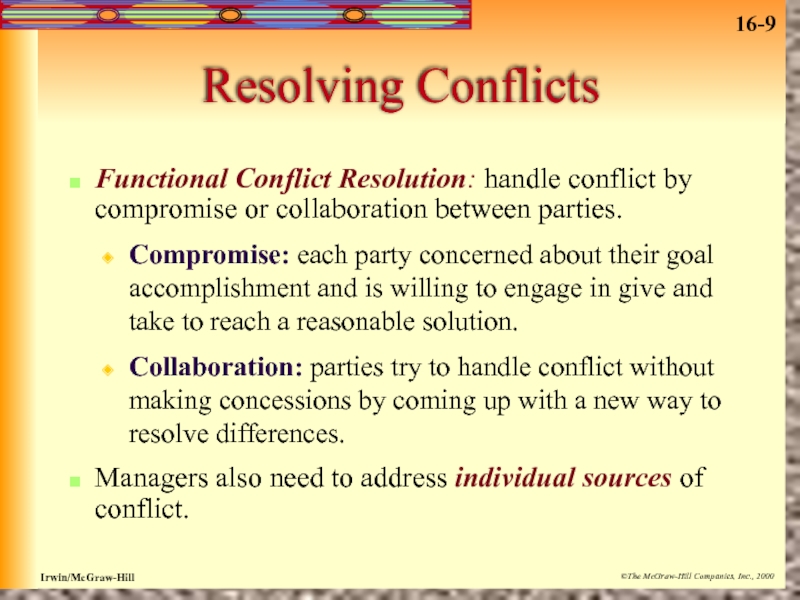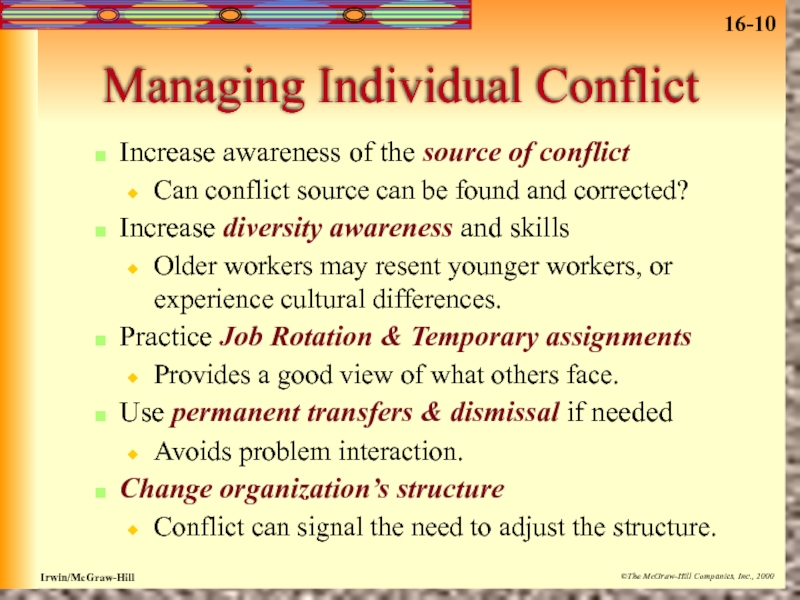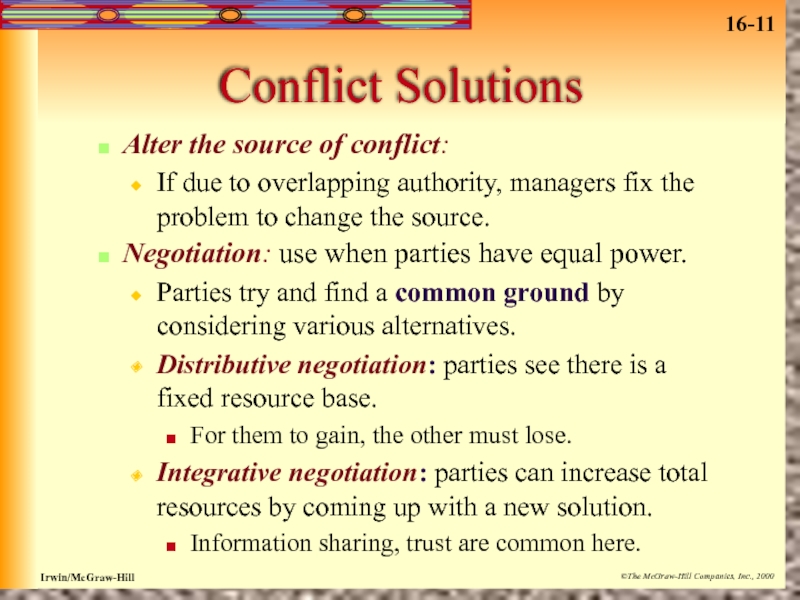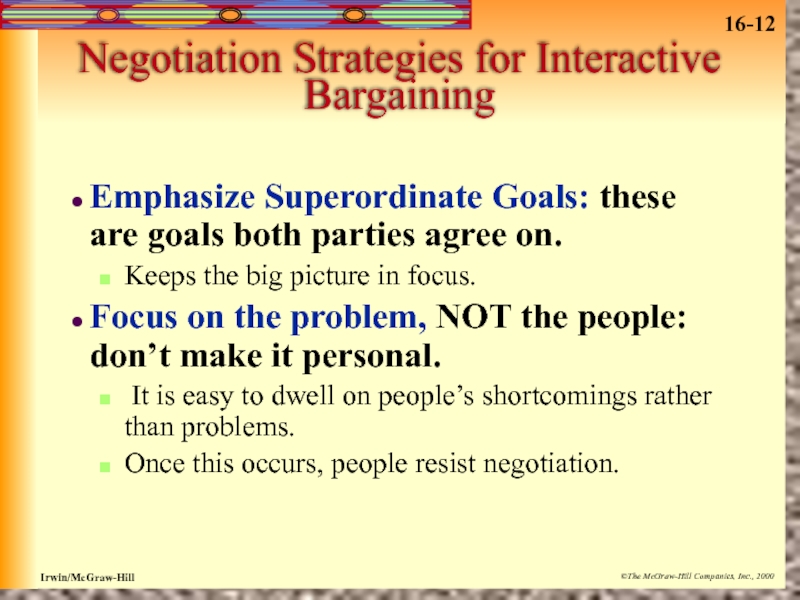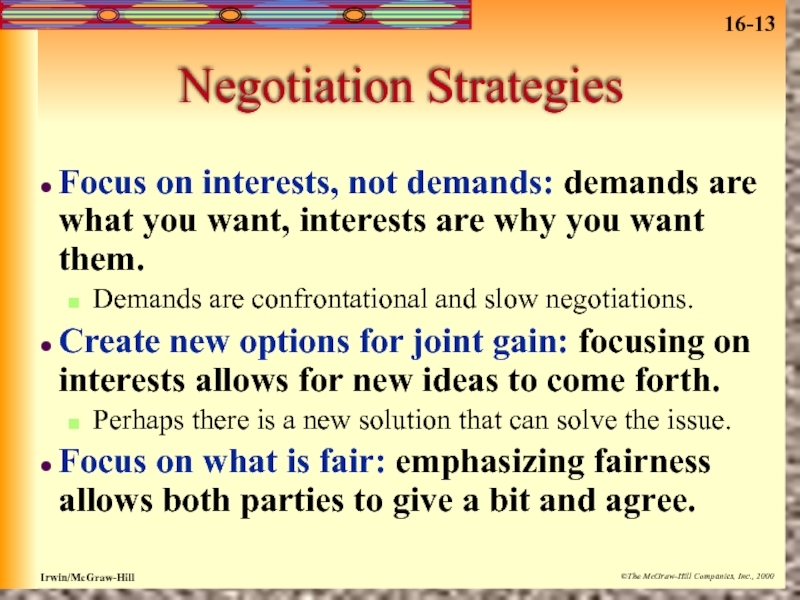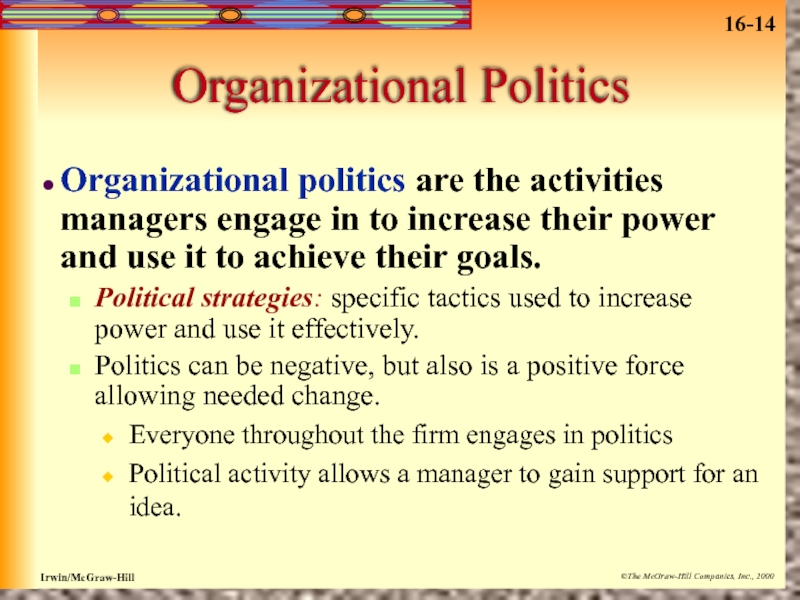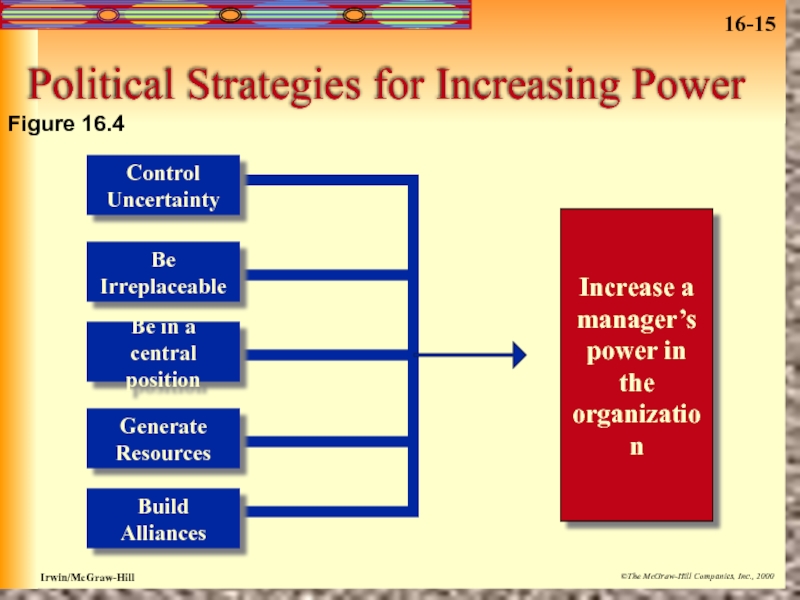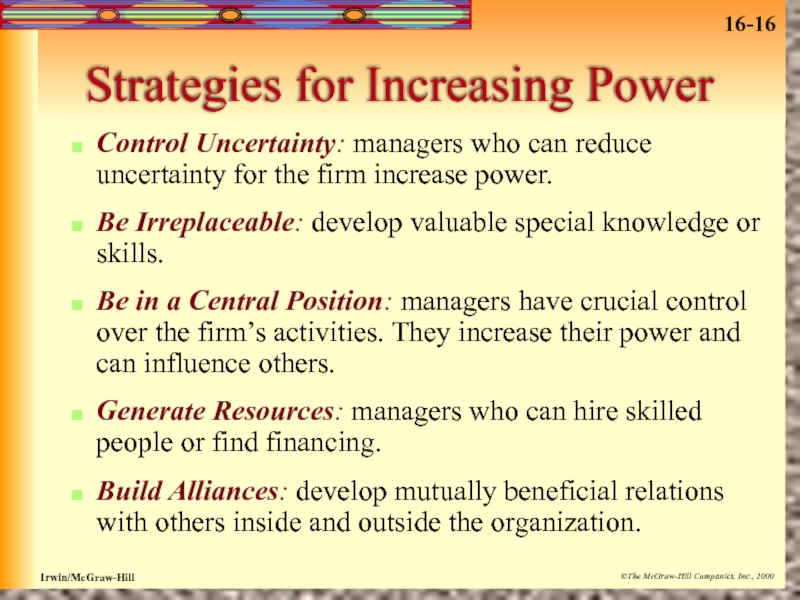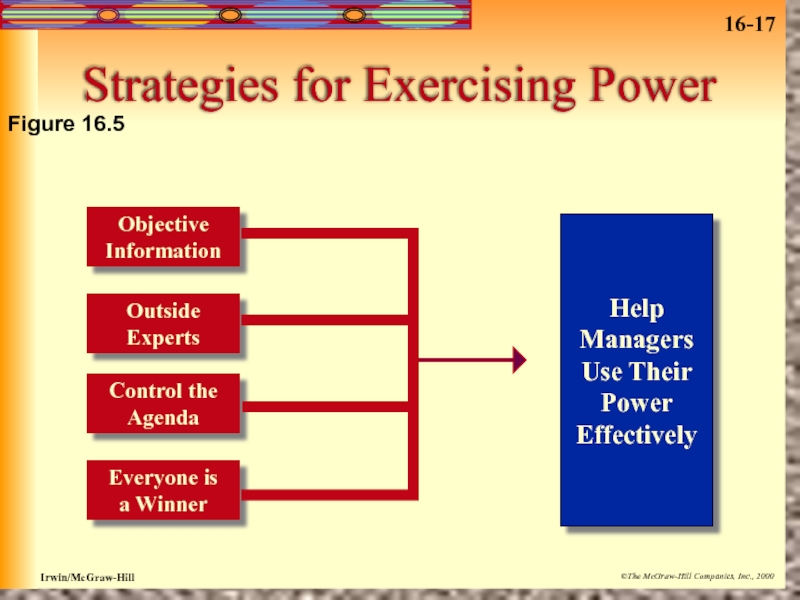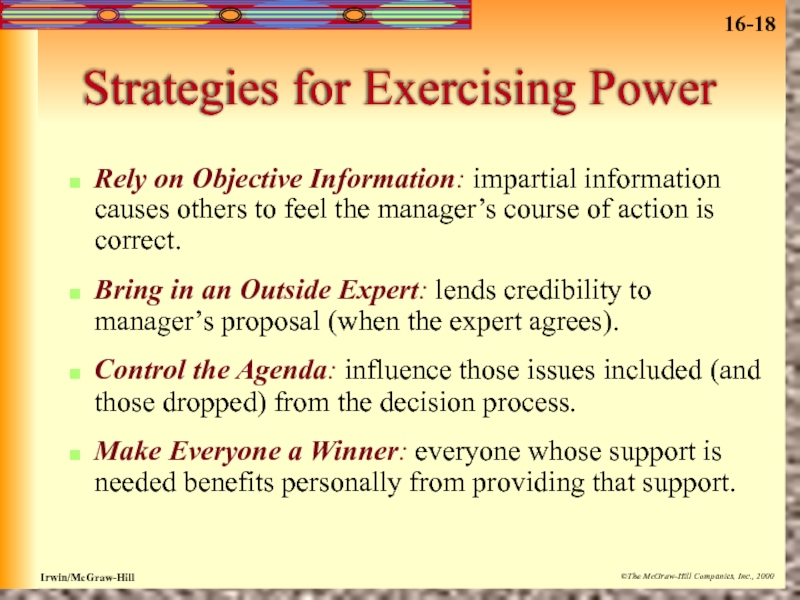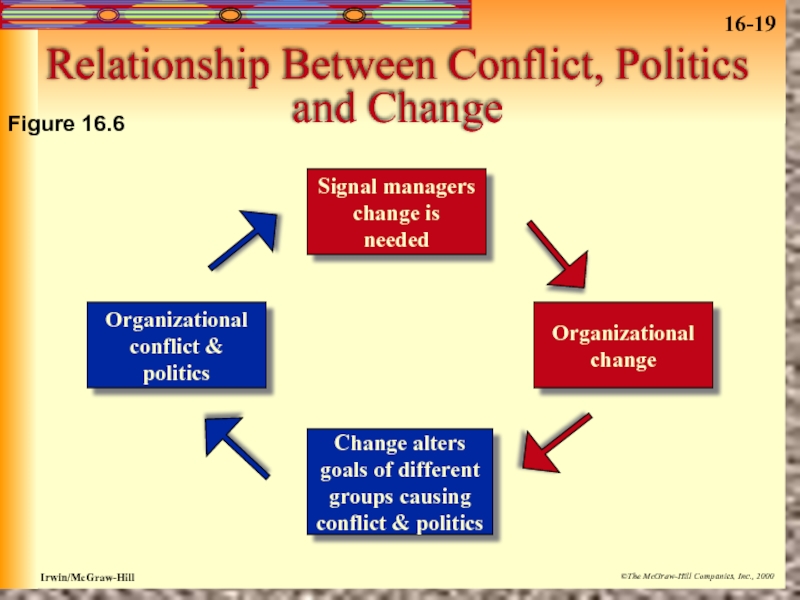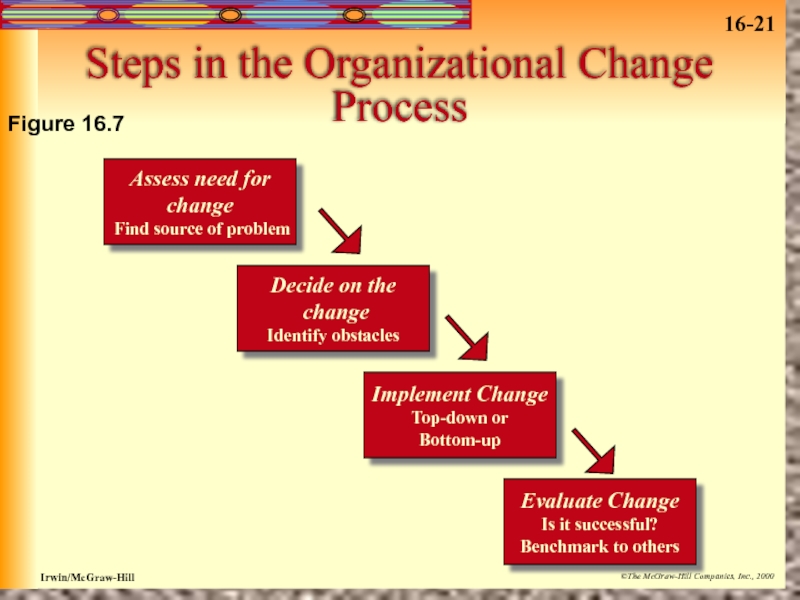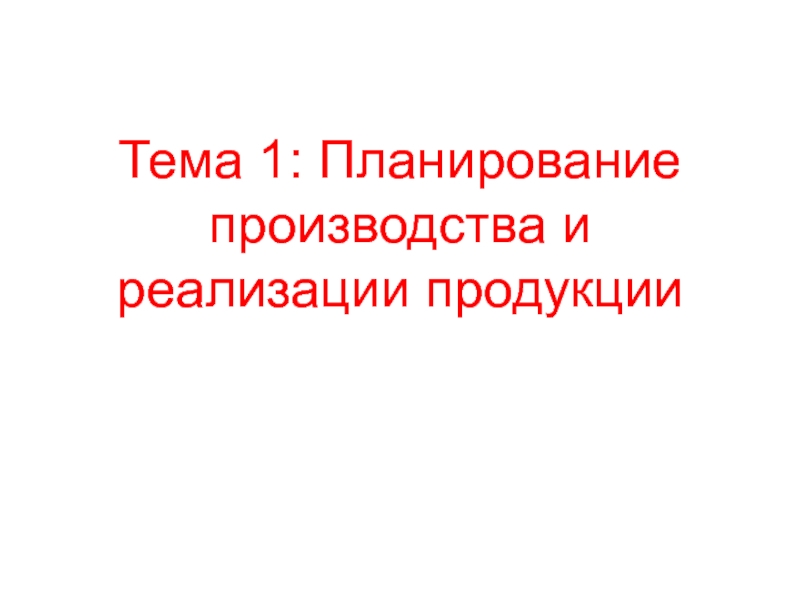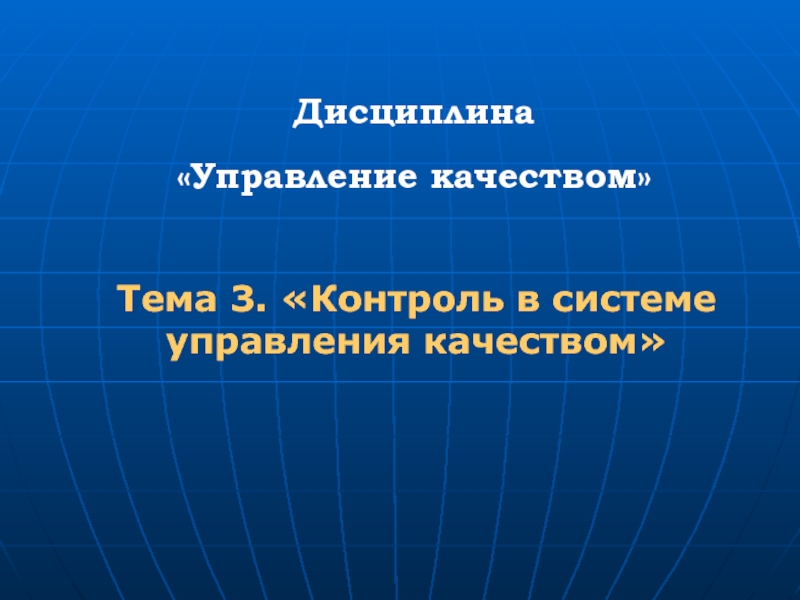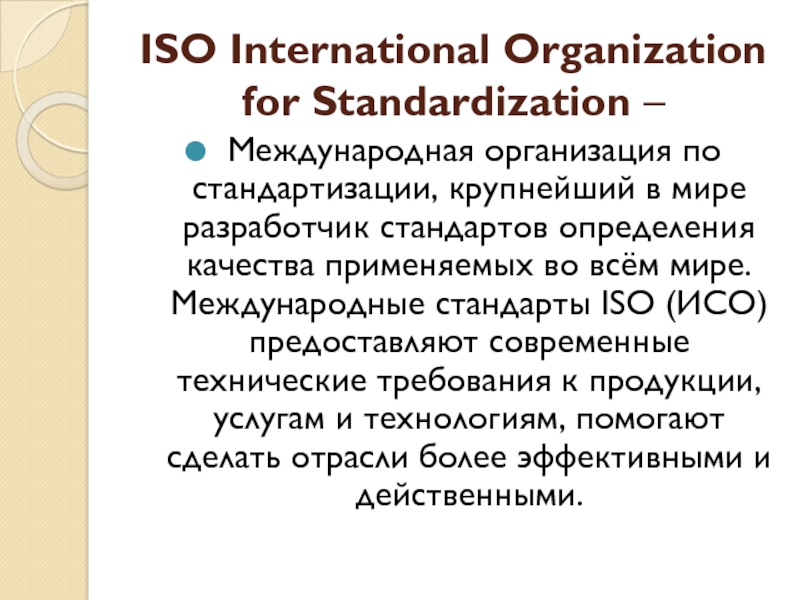- Главная
- Разное
- Дизайн
- Бизнес и предпринимательство
- Аналитика
- Образование
- Развлечения
- Красота и здоровье
- Финансы
- Государство
- Путешествия
- Спорт
- Недвижимость
- Армия
- Графика
- Культурология
- Еда и кулинария
- Лингвистика
- Английский язык
- Астрономия
- Алгебра
- Биология
- География
- Детские презентации
- Информатика
- История
- Литература
- Маркетинг
- Математика
- Медицина
- Менеджмент
- Музыка
- МХК
- Немецкий язык
- ОБЖ
- Обществознание
- Окружающий мир
- Педагогика
- Русский язык
- Технология
- Физика
- Философия
- Химия
- Шаблоны, картинки для презентаций
- Экология
- Экономика
- Юриспруденция
Conflict management. (Session 9.16) презентация
Содержание
- 1. Conflict management. (Session 9.16)
- 2. Organizational Conflict Conflict exists in situations
- 3. Conflict and Organizational Performance Level
- 4. Types of Conflict Interpersonal Conflict: between individuals
- 5. Types of Conflict Figure 16.2
- 6. Sources of Conflict Different goals and time
- 7. Sources of Conflict Incompatible Evaluation or reward
- 8. Sources of Conflict Figure 16.3
- 9. Resolving Conflicts Functional Conflict Resolution: handle conflict
- 10. Managing Individual Conflict Increase awareness of the
- 11. Conflict Solutions Alter the source of conflict:
- 12. Negotiation Strategies for Interactive Bargaining Emphasize Superordinate
- 13. Negotiation Strategies Focus on interests, not demands:
- 14. Organizational Politics Organizational politics are the activities
- 15. Political Strategies for Increasing Power Figure 16.4
- 16. Strategies for Increasing Power Control Uncertainty: managers
- 17. Strategies for Exercising Power Figure 16.5
- 18. Strategies for Exercising Power Rely on Objective
- 19. Relationship Between Conflict, Politics and Change Signal
- 20. Managing Organizational Change Assess need for change:
- 21. Steps in the Organizational Change Process Figure 16.7
Слайд 2Organizational Conflict
Conflict exists in situations where goals, interests or values
of people are incompatible and they block other’s efforts to achieve their goals.
Some level of conflict is inevitable given the wide range of goals in a firm.
Some conflict is good for organizational performance.
Too much causes managers to spend much time responding to conflict.
Some level of conflict is inevitable given the wide range of goals in a firm.
Some conflict is good for organizational performance.
Too much causes managers to spend much time responding to conflict.
Слайд 3Conflict and Organizational Performance
Level of Conflict
Low
Low
High
Low
High
Level of Organizational
Performance
B
A
C
Figure 16.1
Слайд 4Types of Conflict
Interpersonal Conflict: between individuals based on differing goals or
values.
Intragroup Conflict: occurs within a group or team.
Intergroup Conflict: occurs between 2 or more teams or groups.
Managers play a key role in resolution of this conflict
Interorganizational Conflict: occurs across organizations.
Managers in one firm may feel another is not behaving ethically.
Intragroup Conflict: occurs within a group or team.
Intergroup Conflict: occurs between 2 or more teams or groups.
Managers play a key role in resolution of this conflict
Interorganizational Conflict: occurs across organizations.
Managers in one firm may feel another is not behaving ethically.
Слайд 6Sources of Conflict
Different goals and time horizons: different groups have differing
goals.
Production focuses on efficiency; Marketing on sales.
Overlapping authority: two or more managers claim authority for the same activities.
Leads to conflict between the managers and workers.
Task Interdependencies: one member of a group fails to finish a task that another depends on.
This makes the worker that is waiting fall behind.
Production focuses on efficiency; Marketing on sales.
Overlapping authority: two or more managers claim authority for the same activities.
Leads to conflict between the managers and workers.
Task Interdependencies: one member of a group fails to finish a task that another depends on.
This makes the worker that is waiting fall behind.
Слайд 7Sources of Conflict
Incompatible Evaluation or reward system: workers are evaluated for
one thing, but are told to do something different.
Groups rewarded for low cost but firm needs higher service.
Scarce Resources: managers can conflict over allocation of resources.
When all resources are scarce, managers can fight over allocations.
Status inconsistencies: some groups have higher status than others.
Leads to managers feeling others are favored.
Groups rewarded for low cost but firm needs higher service.
Scarce Resources: managers can conflict over allocation of resources.
When all resources are scarce, managers can fight over allocations.
Status inconsistencies: some groups have higher status than others.
Leads to managers feeling others are favored.
Слайд 9Resolving Conflicts
Functional Conflict Resolution: handle conflict by compromise or collaboration between
parties.
Compromise: each party concerned about their goal accomplishment and is willing to engage in give and take to reach a reasonable solution.
Collaboration: parties try to handle conflict without making concessions by coming up with a new way to resolve differences.
Managers also need to address individual sources of conflict.
Compromise: each party concerned about their goal accomplishment and is willing to engage in give and take to reach a reasonable solution.
Collaboration: parties try to handle conflict without making concessions by coming up with a new way to resolve differences.
Managers also need to address individual sources of conflict.
Слайд 10Managing Individual Conflict
Increase awareness of the source of conflict
Can conflict source
can be found and corrected?
Increase diversity awareness and skills
Older workers may resent younger workers, or experience cultural differences.
Practice Job Rotation & Temporary assignments
Provides a good view of what others face.
Use permanent transfers & dismissal if needed
Avoids problem interaction.
Change organization’s structure
Conflict can signal the need to adjust the structure.
Increase diversity awareness and skills
Older workers may resent younger workers, or experience cultural differences.
Practice Job Rotation & Temporary assignments
Provides a good view of what others face.
Use permanent transfers & dismissal if needed
Avoids problem interaction.
Change organization’s structure
Conflict can signal the need to adjust the structure.
Слайд 11Conflict Solutions
Alter the source of conflict:
If due to overlapping authority,
managers fix the problem to change the source.
Negotiation: use when parties have equal power.
Parties try and find a common ground by considering various alternatives.
Distributive negotiation: parties see there is a fixed resource base.
For them to gain, the other must lose.
Integrative negotiation: parties can increase total resources by coming up with a new solution.
Information sharing, trust are common here.
Negotiation: use when parties have equal power.
Parties try and find a common ground by considering various alternatives.
Distributive negotiation: parties see there is a fixed resource base.
For them to gain, the other must lose.
Integrative negotiation: parties can increase total resources by coming up with a new solution.
Information sharing, trust are common here.
Слайд 12Negotiation Strategies for Interactive Bargaining
Emphasize Superordinate Goals: these are goals both
parties agree on.
Keeps the big picture in focus.
Focus on the problem, NOT the people: don’t make it personal.
It is easy to dwell on people’s shortcomings rather than problems.
Once this occurs, people resist negotiation.
Keeps the big picture in focus.
Focus on the problem, NOT the people: don’t make it personal.
It is easy to dwell on people’s shortcomings rather than problems.
Once this occurs, people resist negotiation.
Слайд 13Negotiation Strategies
Focus on interests, not demands: demands are what you want,
interests are why you want them.
Demands are confrontational and slow negotiations.
Create new options for joint gain: focusing on interests allows for new ideas to come forth.
Perhaps there is a new solution that can solve the issue.
Focus on what is fair: emphasizing fairness allows both parties to give a bit and agree.
Demands are confrontational and slow negotiations.
Create new options for joint gain: focusing on interests allows for new ideas to come forth.
Perhaps there is a new solution that can solve the issue.
Focus on what is fair: emphasizing fairness allows both parties to give a bit and agree.
Слайд 14Organizational Politics
Organizational politics are the activities managers engage in to increase
their power and use it to achieve their goals.
Political strategies: specific tactics used to increase power and use it effectively.
Politics can be negative, but also is a positive force allowing needed change.
Everyone throughout the firm engages in politics
Political activity allows a manager to gain support for an idea.
Political strategies: specific tactics used to increase power and use it effectively.
Politics can be negative, but also is a positive force allowing needed change.
Everyone throughout the firm engages in politics
Political activity allows a manager to gain support for an idea.
Слайд 16Strategies for Increasing Power
Control Uncertainty: managers who can reduce uncertainty for
the firm increase power.
Be Irreplaceable: develop valuable special knowledge or skills.
Be in a Central Position: managers have crucial control over the firm’s activities. They increase their power and can influence others.
Generate Resources: managers who can hire skilled people or find financing.
Build Alliances: develop mutually beneficial relations with others inside and outside the organization.
Be Irreplaceable: develop valuable special knowledge or skills.
Be in a Central Position: managers have crucial control over the firm’s activities. They increase their power and can influence others.
Generate Resources: managers who can hire skilled people or find financing.
Build Alliances: develop mutually beneficial relations with others inside and outside the organization.
Слайд 18Strategies for Exercising Power
Rely on Objective Information: impartial information causes others
to feel the manager’s course of action is correct.
Bring in an Outside Expert: lends credibility to manager’s proposal (when the expert agrees).
Control the Agenda: influence those issues included (and those dropped) from the decision process.
Make Everyone a Winner: everyone whose support is needed benefits personally from providing that support.
Bring in an Outside Expert: lends credibility to manager’s proposal (when the expert agrees).
Control the Agenda: influence those issues included (and those dropped) from the decision process.
Make Everyone a Winner: everyone whose support is needed benefits personally from providing that support.
Слайд 19Relationship Between Conflict, Politics and Change
Signal managers
change is
needed
Organizational
change
Change alters
goals
of different
groups causing
conflict & politics
groups causing
conflict & politics
Organizational
conflict & politics
Figure 16.6
Слайд 20Managing Organizational Change
Assess need for change: recognize a problem exists and
find its source.
Look inside and outside the firm for sources.
Decide on the change to make: determine the ideal future state.
Decide exactly what the future company will look like.
What obstacles need to be changed to get there.
Implement the change: a top-down change is quickest, bottom-up is more gradual.
Bottom-up is more effective at eliminating obstacles.
Evaluate Change: was it successful? Benchmark (compare) your change to others.
Look inside and outside the firm for sources.
Decide on the change to make: determine the ideal future state.
Decide exactly what the future company will look like.
What obstacles need to be changed to get there.
Implement the change: a top-down change is quickest, bottom-up is more gradual.
Bottom-up is more effective at eliminating obstacles.
Evaluate Change: was it successful? Benchmark (compare) your change to others.
